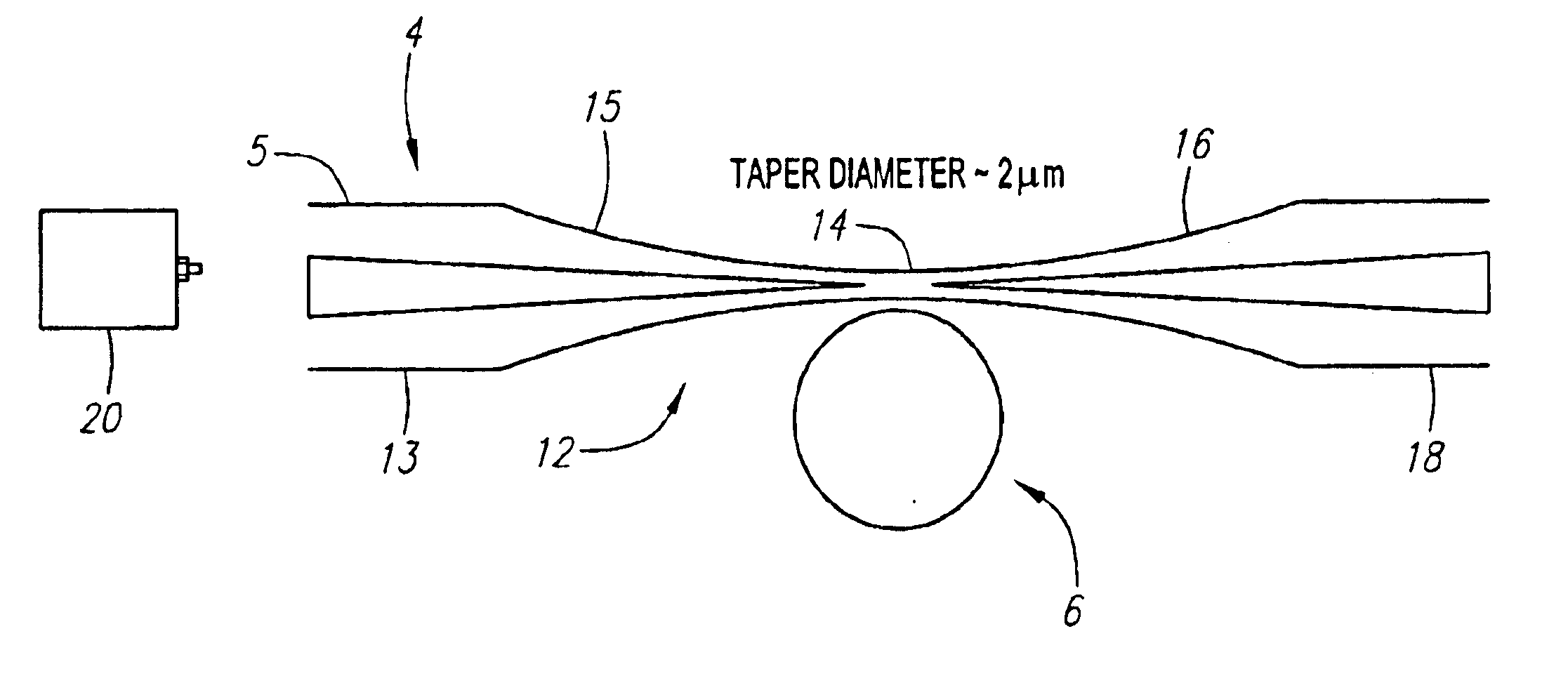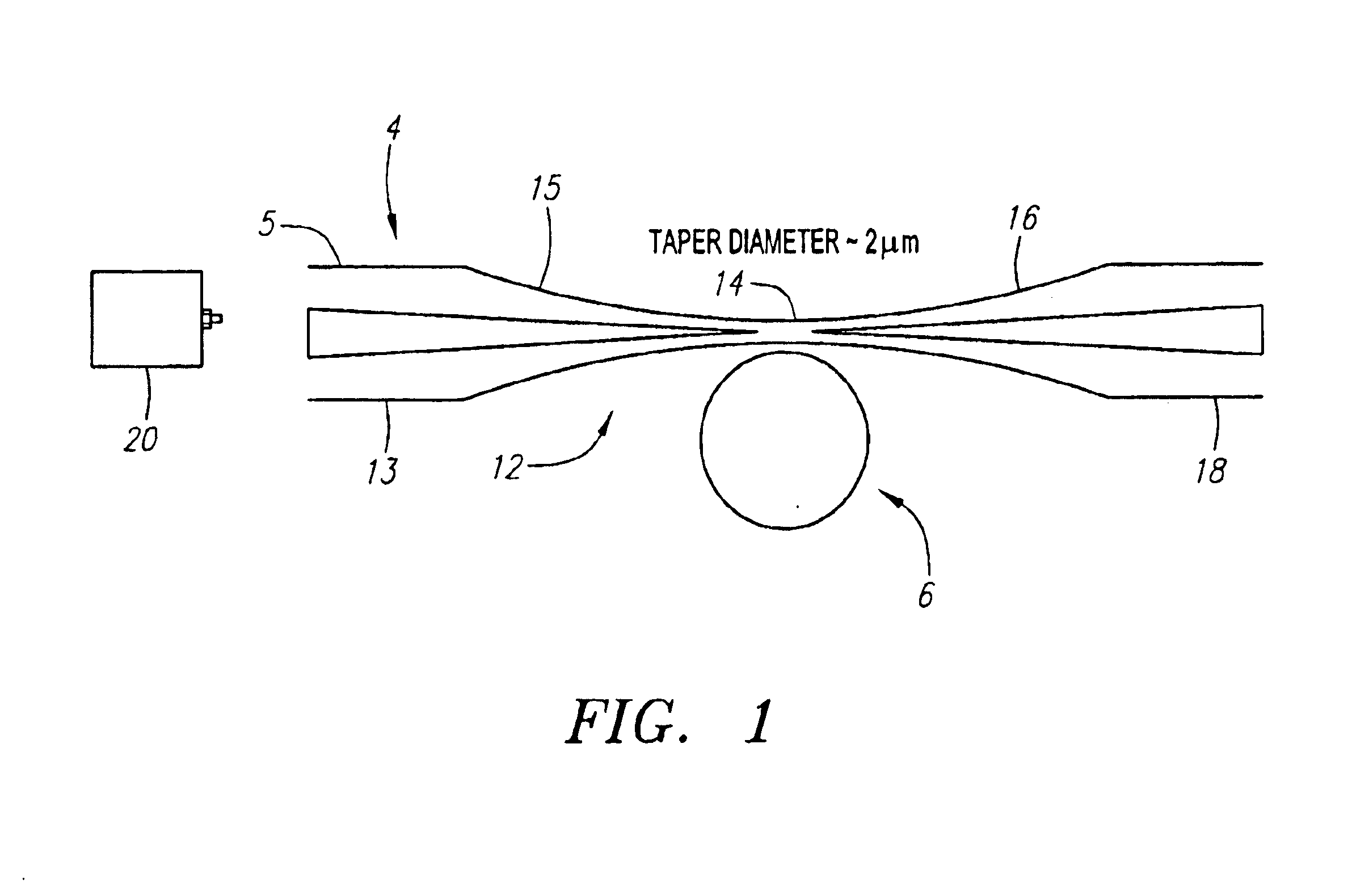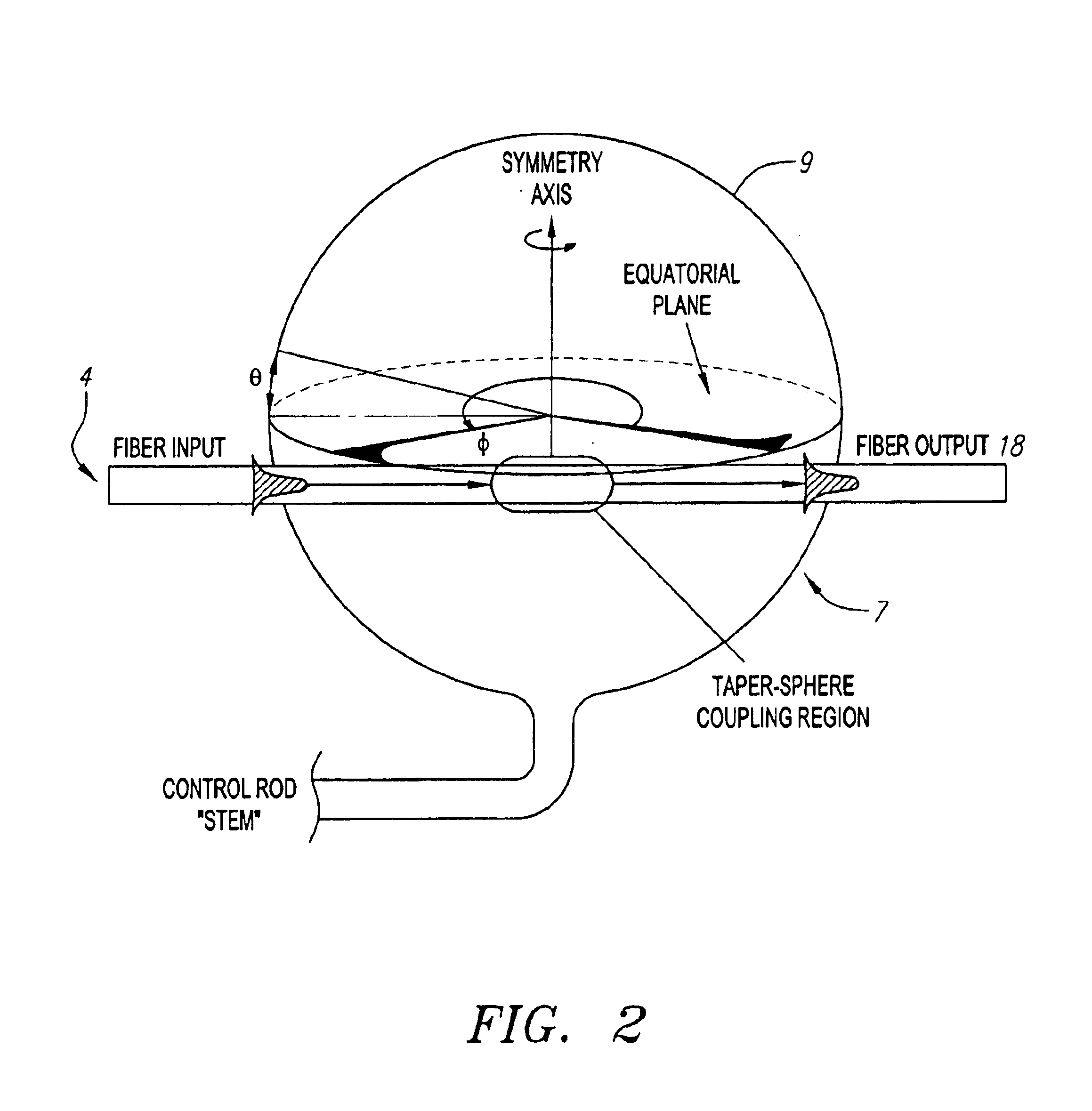Fiber-coupled microsphere Raman laser
a laser and microsphere technology, applied in the field of lasers, can solve the problems of usually power-hungry devices, achieve the effects of convenient optical field transport, reduce the necessary threshold pump power, and improve overall efficiency
- Summary
- Abstract
- Description
- Claims
- Application Information
AI Technical Summary
Benefits of technology
Problems solved by technology
Method used
Image
Examples
Embodiment Construction
[0028]For the purposes of discussion the terms resonance and optical mode will be used interchangeably herein. Likewise, the terms micro-cavity resonator and micro-resonator will be used interchangeably herein. Of all cavity geometries, micrometer-sized dielectric spherical resonators are believed to be one of the best in terms of their ability to store energy for long periods of time within small volumes. In the sphere, light orbits near the surface, where long confinement times (high Q) effectively wrap a large interaction distance into a tiny volume. In this configuration, the physics within the sphere enters a nonlinear regime wherein conventional rules for light propagation break down. In the preferred embodiment, the molecules of the glass bead itself are distorted, resulting in a process called Raman emission and lasing. Because Raman lasers require enormous intensities to function, they are usually power-hungry devices. The present invention uses the physics of the micro-res...
PUM
 Login to View More
Login to View More Abstract
Description
Claims
Application Information
 Login to View More
Login to View More - R&D
- Intellectual Property
- Life Sciences
- Materials
- Tech Scout
- Unparalleled Data Quality
- Higher Quality Content
- 60% Fewer Hallucinations
Browse by: Latest US Patents, China's latest patents, Technical Efficacy Thesaurus, Application Domain, Technology Topic, Popular Technical Reports.
© 2025 PatSnap. All rights reserved.Legal|Privacy policy|Modern Slavery Act Transparency Statement|Sitemap|About US| Contact US: help@patsnap.com



